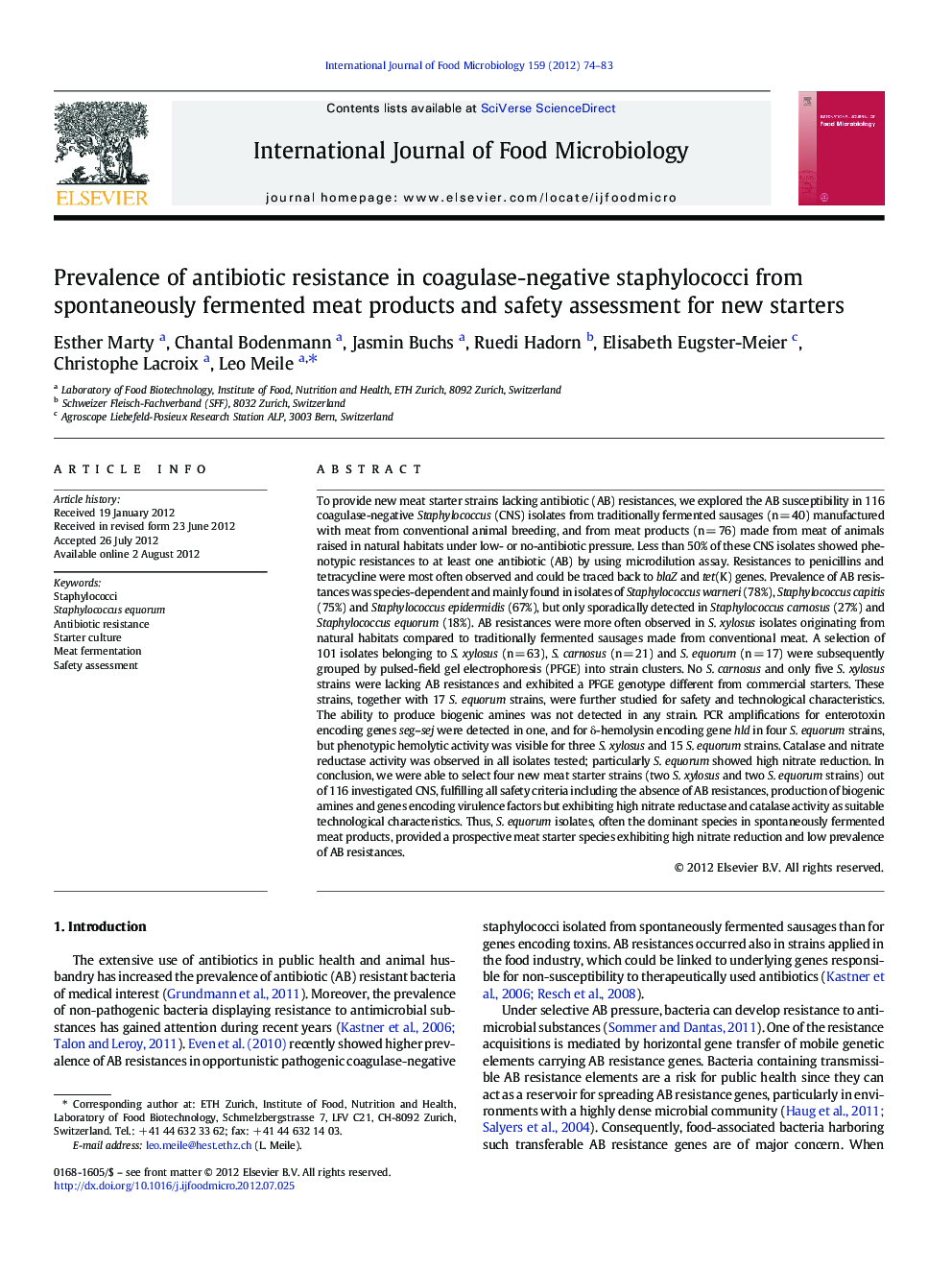| کد مقاله | کد نشریه | سال انتشار | مقاله انگلیسی | نسخه تمام متن |
|---|---|---|---|---|
| 4367571 | 1616637 | 2012 | 10 صفحه PDF | دانلود رایگان |

To provide new meat starter strains lacking antibiotic (AB) resistances, we explored the AB susceptibility in 116 coagulase-negative Staphylococcus (CNS) isolates from traditionally fermented sausages (n = 40) manufactured with meat from conventional animal breeding, and from meat products (n = 76) made from meat of animals raised in natural habitats under low- or no-antibiotic pressure. Less than 50% of these CNS isolates showed phenotypic resistances to at least one antibiotic (AB) by using microdilution assay. Resistances to penicillins and tetracycline were most often observed and could be traced back to blaZ and tet(K) genes. Prevalence of AB resistances was species-dependent and mainly found in isolates of Staphylococcus warneri (78%), Staphylococcus capitis (75%) and Staphylococcus epidermidis (67%), but only sporadically detected in Staphylococcus carnosus (27%) and Staphylococcus equorum (18%). AB resistances were more often observed in S. xylosus isolates originating from natural habitats compared to traditionally fermented sausages made from conventional meat. A selection of 101 isolates belonging to S. xylosus (n = 63), S. carnosus (n = 21) and S. equorum (n = 17) were subsequently grouped by pulsed-field gel electrophoresis (PFGE) into strain clusters. No S. carnosus and only five S. xylosus strains were lacking AB resistances and exhibited a PFGE genotype different from commercial starters. These strains, together with 17 S. equorum strains, were further studied for safety and technological characteristics. The ability to produce biogenic amines was not detected in any strain. PCR amplifications for enterotoxin encoding genes seg–sej were detected in one, and for δ-hemolysin encoding gene hld in four S. equorum strains, but phenotypic hemolytic activity was visible for three S. xylosus and 15 S. equorum strains. Catalase and nitrate reductase activity was observed in all isolates tested; particularly S. equorum showed high nitrate reduction. In conclusion, we were able to select four new meat starter strains (two S. xylosus and two S. equorum strains) out of 116 investigated CNS, fulfilling all safety criteria including the absence of AB resistances, production of biogenic amines and genes encoding virulence factors but exhibiting high nitrate reductase and catalase activity as suitable technological characteristics. Thus, S. equorum isolates, often the dominant species in spontaneously fermented meat products, provided a prospective meat starter species exhibiting high nitrate reduction and low prevalence of AB resistances.
► Low prevalence of AB resistances in CNS in spontaneously fermented meat products
► Low risk of safety hazard and biogenic amine production in S. xylosus and S. equorum
► High nitrate reductase and catalase activity in S. xylosus and S. equorum isolates
► Some S. equorum fulfilled technological and safety criteria for new meat starters.
► Successful selection of new meat starter strains lacking antibiotic resistances
Journal: International Journal of Food Microbiology - Volume 159, Issue 2, 1 October 2012, Pages 74–83